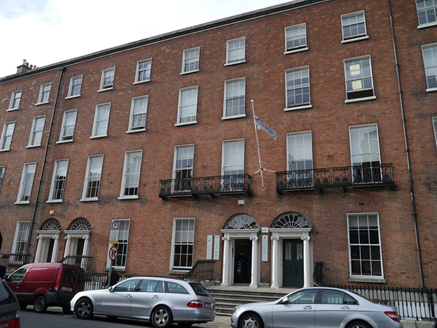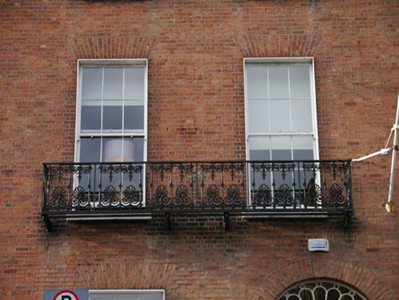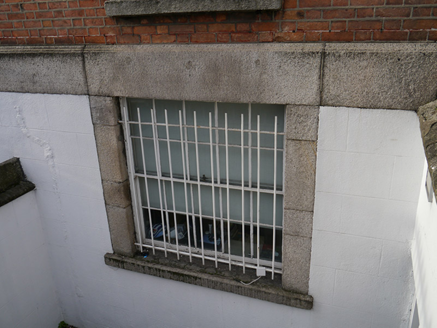Survey Data
Reg No
50930282
Rating
Regional
Categories of Special Interest
Architectural, Artistic
Original Use
House
In Use As
Office
Date
1820 - 1840
Coordinates
316367, 233055
Date Recorded
08/10/2015
Date Updated
--/--/--
Description
Terraced two-bay four-storey over basement former townhouse, built c. 1830, with bowed bay and two-stage multi-storey flat-roofed extension to rear (west). Now in use offices. Replacement mansard-style roof, concealed by parapet with moulded granite cornice and coping. Parapet gutters. Red brick walling laid in Flemish bond over ruled-and-lined rendered walling to basement beneath granite stringcourse. Square-headed window openings with brick voussoirs, patent reveals and granite sills; granite surrounds to basement opening with steel grille affixed to reveals. Largely six-over-six sliding timber sash windows with ogee horns, convex horns to upper floors and basement, three-over-six to third floor and ten-over-ten to basement with wired glass inserts. Decorative continuous cast-iron balconette to first floor openings. Eight-over-eight sash to second floor rear, over pair of Wyatt-style windows to ground and first floors. Round-headed door opening with brick voussoirs and recessed surround containing prostyle portico with nail-head panelled frieze and moulded cornice carried on Scamozzian-Ionic columns over plinth stops, with petal fanlight and panelled linings to replacement (possibly early-twentieth century) timber and glass panelled door with decorative iron work fronting upper glazed panels and recent chrome furniture. Shared granite entrance platform approached by six bull-nosed granite steps, flanked to south by curved iron railings with decorative cast-iron finials and collars on granite plinth, enclosing basement area. Coal-hole cover to pavement. Recent brick boundary wall to Quinn’s Lane.
Appraisal
Laid out c. 1820, Pembroke Street Upper is characterised by well-proportioned late-Georgian style brick terraces which display restrained detailing and classically-styled doorcases. No. 30 forms part of a cohesive terrace, comprising Nos. 27-32 (50930280-5), which although extended to the rear and modernised, it is well-retained and distinguished by Scamozzian-Ionic doorcases, petal fanlights and decorative ironwork. The terrace makes a positive contribution to the streetscape and to the historic Georgian core of south Dublin.



















